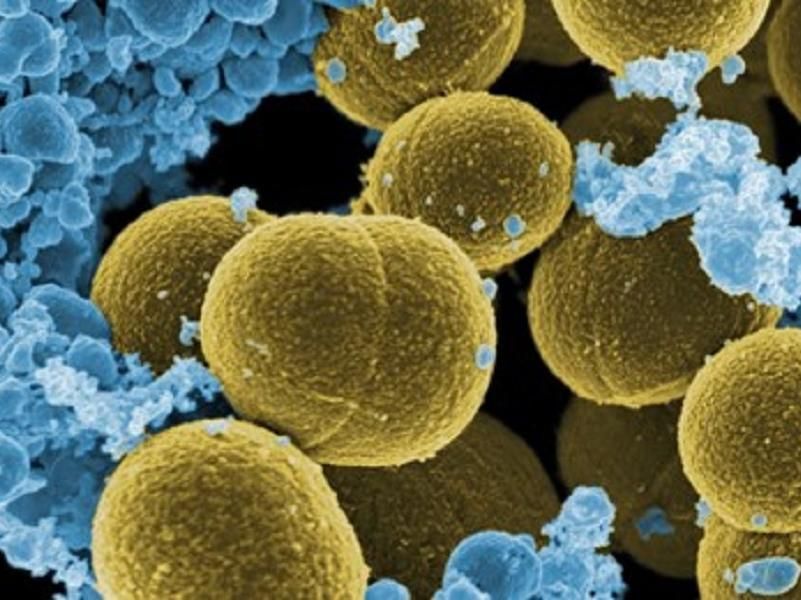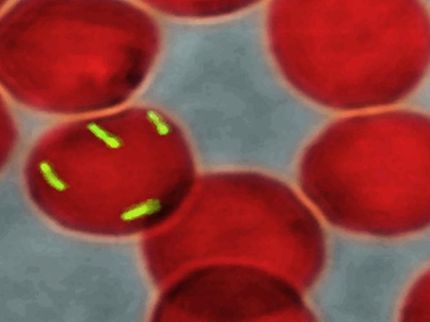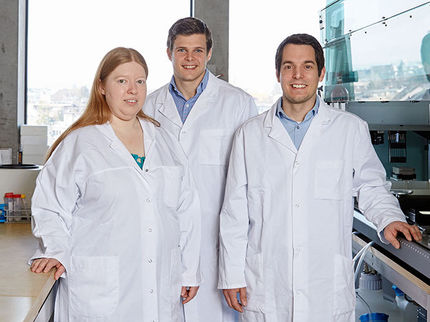Bacterial function discovered that phagocytizes DNA to survive immune system
How the pathogen Staphylococcus aureus captures DNA from the infected cell to repair its genetic material during infection
Advertisement
An international team led by the Centro Nacional de Biotecnología (CNB-CSIC) describes in Nature Communications a new function of the comk gene, belonging to the human pathogen Staphylococcus aureus, which captures exogenous DNA to repair its genetic material and thus survive the host immune response. This finding opens the door to the development of therapeutic targets to strengthen the immune system against hospital-acquired infections.

Staphylococcus aureus bacteria
Pixabay
Bacteria have a property called natural competence. This is based on the action of a protein complex in their membrane that can transport external DNA -from the cell they infect or from other nearby bacteria- into the bacterium and incorporate it into its own. Through such a mechanism, the bacteria modify their own genetic information. "It's a way for them to evolve," says Daniel López, head of the Molecular Biology of Infections group at the CNB, who led the research.
However, an unknown related to the genetic information responsible for such a function remained to be solved. "There are many bacterial species that, although they have the genes to produce this machinery, have never been seen to be able to acquire genes from outside. A question that has been on the table for decades is: how is it possible that the genes for natural competence are in non-competent bacteria?" says López.
The answer is given in the present research. So-called noncompetent bacteria do use competition genes to incorporate extracellular DNA. But they do not use this material to modify their genome "but use them as food and to fix their genetic material".
When infecting a host, pathogenic bacteria must cope with a hostile environment, caused mainly by the action of immune cells sent to the site of infection. The success of a pathogen will lie, in part, in its ability to fight and survive immune defenses, which have two fundamental effects on bacteria. The first involves impairing the bacteria's efficiency in obtaining nutrients and energy through conventional processes. The second involves damaging the genome of the invading agent.
Julia García-Fernández, CNB researcher and one of the first authors of the work explains that, "in this situation, S. aureus induces this machinery, which acts in two ways, on the one hand, it redirects the metabolism to grow more slowly and captures exogenous DNA that will allow it to repair the damage produced in its genetic material. "
Adaptation to the immune response.
S. aureus is a pathogen associated with hospital-acquired infections, some of them fatal, in different tissues and organs such as skin, respiratory tract or bones. However, its prevalence has been increasing, including its increased presence in community settings, such as educational centers or prisons, where affected individuals are not characterized by a weakened immune system.
Part of the success of S. aureus, in addition to the acquisition of resistance to antibiotics, lies in the ability of the microorganism to adapt metabolically to the host immune response. The CNB-CSIC team has now been able to decipher that this response occurs thanks to the natural competition gene comk, whose known function until now was the transport of exogenous DNA.
The damage that occurs in bacterial DNA during infection is due to the free radicals Reactive Oxygen Species (ROS) produced by immune cells in their fight against S. aureus. The action of comk allows the genome to be repaired.
In addition, during infection, the immune system makes it difficult for S. aureus to breathe. The bacterium's plan B involves switching to fermentation as a mechanism of cellular respiration. But this system is much less efficient when it comes to glucose use. Researchers have determined the role of comk in enhancing the flux of glucose metabolism so that it can competitively ferment.
Therapeutic potential
The team tested the new function and was able to observe that, by targeting such machinery, the bacteria were unable to infect and eventually died. "This is an important advance, not only at the academic level, but also because the mechanism has a very relevant functionality when it comes to blocking infections," says López.
The research opens the door to the development of molecules targeting the comk gene as a therapeutic possibility. The therapy would act as an aid to the immune system by preventing efficient fermentation and genetic repair of the bacteria. Lopez's group at CNB is working in that direction by computer screening for compounds that inhibit naturally competitive genes.
Note: This article has been translated using a computer system without human intervention. LUMITOS offers these automatic translations to present a wider range of current news. Since this article has been translated with automatic translation, it is possible that it contains errors in vocabulary, syntax or grammar. The original article in Spanish can be found here.

























































